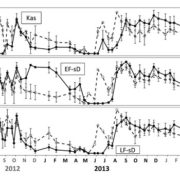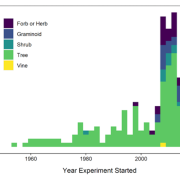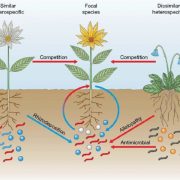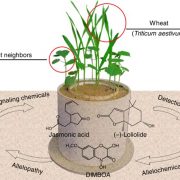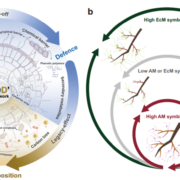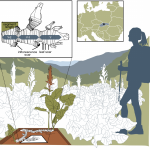Driving factors of disease spread in natural plant-pollinator communities (Nature Ecol. Evol.)
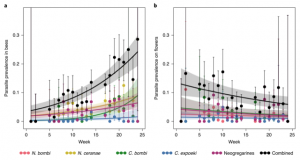 Disease spread within species-rich communities is hard to predict and prevent due to the dynamic transmission of parasites between multiple hosts that change in abundance and composition over time. To better understand the temporal dynamics of bee parasites in communities of plants and pollinators, Graystock and Ng et al. sampled 89 species of flowers and 110 species of bees in the field and screened for five common multi-host parasite species (e.g., trypanosomes, neogregarines or microsporidians) over 26 weeks. The temporal analysis revealed that parasites in bees were the most prevalent late in the year when the bee community is least diverse and dominated by social bees. The authors also found that the prevalence of parasites on flowers was lowest when floral abundance was highest, which may be explained by a smaller number of bee visits per plant. Thus, species turnover and abundance across the bee-flower community are likely important factors influencing the prevalence of parasites. Findings in this study suggests that maintaining high floral numbers and bee biodiversity is a potential strategy to reduce the risk of parasite outbreak in bee-flower communities. (Summary by Tatsuya Nobori @nobolly) Nat. Ecol. Evol. 10.1038/s41559-020-1247-x
Disease spread within species-rich communities is hard to predict and prevent due to the dynamic transmission of parasites between multiple hosts that change in abundance and composition over time. To better understand the temporal dynamics of bee parasites in communities of plants and pollinators, Graystock and Ng et al. sampled 89 species of flowers and 110 species of bees in the field and screened for five common multi-host parasite species (e.g., trypanosomes, neogregarines or microsporidians) over 26 weeks. The temporal analysis revealed that parasites in bees were the most prevalent late in the year when the bee community is least diverse and dominated by social bees. The authors also found that the prevalence of parasites on flowers was lowest when floral abundance was highest, which may be explained by a smaller number of bee visits per plant. Thus, species turnover and abundance across the bee-flower community are likely important factors influencing the prevalence of parasites. Findings in this study suggests that maintaining high floral numbers and bee biodiversity is a potential strategy to reduce the risk of parasite outbreak in bee-flower communities. (Summary by Tatsuya Nobori @nobolly) Nat. Ecol. Evol. 10.1038/s41559-020-1247-x


